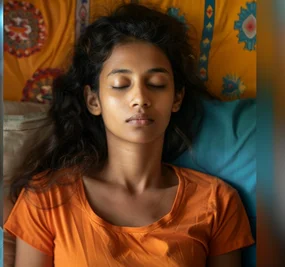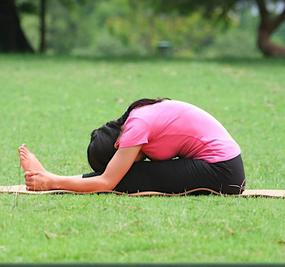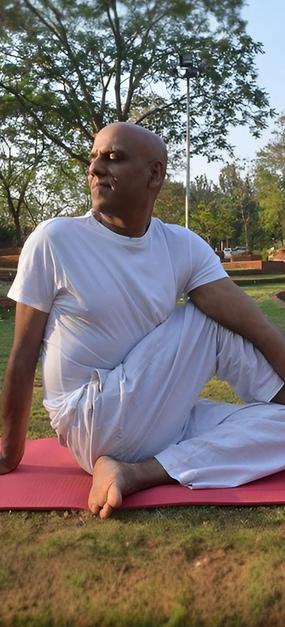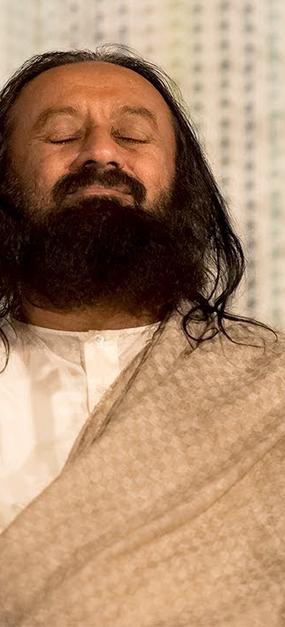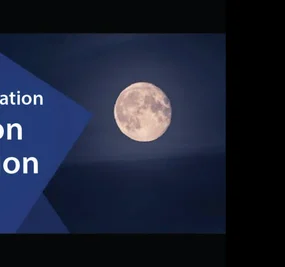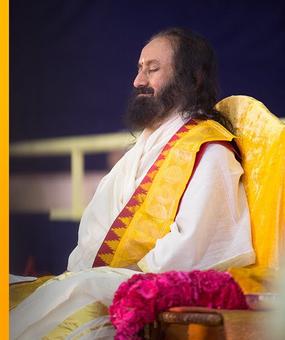Yoga Nidra is an invaluable technique for experiencing deep rest and increasing our efficiency. It is like a guided meditation, we don’t need to make any effort. A regular practice of Yoga Nidra gives us deep relaxation and also helps in releasing traumas and stress. A 20-minute yoga nidra or yogic sleep can give you far deeper rest than an afternoon nap. Yoga Nidra involves restful awareness.
Difference Between Yoga Nidra and Sleep

Sleep is one of the 4 natural states of our consciousness – wakefulness, dream, sleep and the 4th is Turiya Awastha or samadhi. Normally, we move from wakefulness to dream to sleep states. This is the normal mechanism when we lie down to sleep. But in sleep, there is a total loss of awareness and the five senses shut down. The shutting down of the senses energizes our system. But in Yoga Nidra, even though the senses are at rest, with gentle attention paid to the source of sound or instruction, we retain the awareness. In Yoga Nidra, under the guided instructions of a trained yoga teacher, we rotate that awareness through different parts of the body. In Yoga Nidra, we also take the help of the breath.
So moving our awareness throughout the body with the help of the breath, we achieve a deeper relaxation than normal sleep.
In yoga, awareness itself is energy. So when you become aware of your knees, you energize it; if you bring your awareness to your lower back, you are sending energy to your lower back. Similarly, in Yoga Nidra, bringing your awareness to all the parts of the body and consciously relaxing them deeply energizes your whole body and mind.
Yoga Nidra and meditation
Yoga Nidra brings you into a meditative state, it is nothing but a type of lying-down meditation.
Deep rest and dynamic activity are complementary. How can you be dynamic and active if you have not given deep rest to your mind and body? Someone who has never slept cannot feel energetic at all.
~Gurudev Sri Sri Ravi Shankar
Significance of a Yoga Nidra practice
Let us look at what happens in our daily life. At the level of the mind, we have both positive and negative thoughts. We also have both positive and negative emotions. So what are thoughts and what are emotions? Thoughts are some waves of energy at the level of the mind, and emotions are some waves of energy at the level of the feeling. Both positive and negative thoughts, as well as positive and negative emotions, move our prana in our subtle body. If it is something positive, it brings about excitement and stimulation of our nervous system. Something negative brings about constriction of our nervous system or contraction. We keep swinging between this excitement or expansion and contraction all the time in our lives in every activity whether we are talking, at work, at home or facing various life challenges, and this brings about stress at the level of thoughts and emotions. Our nervous system keeps absorbing all this.
Now let us look at what happens when we do Yoga Nidra. When we are lying down, being guided by a teacher, we are relatively more relaxed. Then we start moving our awareness from one part of the body to the other part and we are also breathing in a relaxed way. Slowly, the mind which is always in the loop of the past and the future, planning or caught up with regret, anger or anxiety begins to move out of that loop and comes to the present moment. When your mind is totally in the present moment; you are not doing anything, you are not planning anything, you are not thinking. Your mind is not in the past, there is no anger or regret. As soon as the mind comes to the present, whatever it is holding on to, the past and future, the impressions of the past and the worries of the future; the mind starts to let go. The nervous system reaches a state of deep relaxation where the mind starts releasing impressions. We do not know what impressions are being released, but they are released. This brings relief from stress. You release mental stress which you have accumulated through thoughts, you release emotional stress which you have accumulated through emotions and feelings, along with the physical stress, Because you are lying down and are taking deep breaths, the real physical fatigue of muscles is also released. So Yoga Nidra is a complete letting go of physical, mental and emotional stresses.
Practising Yoga Nidra Regularly can Eliminate Deep-seated Trauma
A consistent practice of Yoga Nidra brings about a huge change. When you do Yoga Nidra regularly, initially it releases the daily or small stresses. But if you do it regularly over a long period, as the Yoga Nidra practice itself becomes deeper, you also release deep-seated traumas, very old memories that you have not been able to release from your mind-body complex.
The Importance of Yoga Nidra, even for Regular Practitioners of Yoga
When we are doing a yoga practice, we are putting effort at the level of the body. Now one may notice, that in our daily lives, we are leading tedious lifestyles. We are working all the time. So now yoga is also part of doing something. But during Yoga Nidra or meditation, they are one of the few times when you get into a state of not doing anything, but simply relaxing for the sake of relaxing. There is not much effort there, because ‘doing’ brings tiredness or exhaustion. So even though you are doing yoga, at the end of that there is effort; but in Yoga Nidra you move into a state of effortlessness which is the deepest form of relaxation, that your body and mind require.
As Gurudev says, when you want to shoot an arrow far, you have to pull it backwards. So, when we are living very hectic lifestyles and multi-tasking round the clock, the quality of relaxation also needs to be equally deep. When there is a lot of activity involved, we need a higher quality of relaxation too to be more efficient in what we do.
It’s very important to include Yoga Nidra at the end of any asana sequence as the body and mind need the time to assimilate the effects of the asanas.
– Gurudev Sri Sri Ravi Shankar
Some points to keep in mind while doing Yoga Nidra
- Relax. Before you do yoga nidra, if you have some desire or sankalpa, just bring them to the mind 2-3 times and then let go completely.
- Gently keep these three things in mind– I want nothing, I do nothing, I am nothing. And then totally let go.
- Be regular with the practice. Do it in a disciplined way for a long time.
- Approach this practice also with honour. When you do these practices with honour, the experience gets profound and enhanced.





